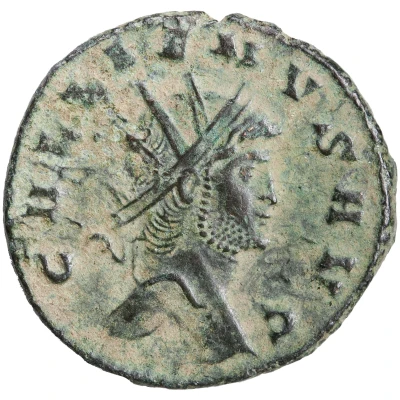Antoninianus - Gallienus LIBERO P CONS AVG
| Silver | - | - |
| Issuer | Rome › Roman Empire (27 BC - 395 AD) |
|---|---|
| Emperor | Gallienus (Publius Licinius Egnatius Gallienus) (253-268) |
| Type | Standard circulation coin |
| Years | 260-268 |
| Value | Antoninianus (1) |
| Currency | Antoninianus, Reform of Caracalla (AD 215 – 301) |
| Composition | Silver |
| Shape | Round (irregular) |
| Technique | Hammered |
| Demonetized | Yes |
| Updated | 2024-10-05 |
| Numista | N#288742 |
|---|---|
| Rarity index | 100% |
Reverse
Panther, walking right or left. Officina mark in exergue.
Script: Latin
Lettering:
LIBERO P CONS AVG
A
Translation:
Libero Patri Conservatori Augusti.
To father Liber, the protector of the emperor (Augustus).
Comment
Source:Online Coins of the Roman Empire (OCRE)
Interesting fact
The Antoninianus, also known as the "Gallienus," was a coin introduced by the Roman Emperor Gallienus in 260 AD, during a time of economic crisis and political instability. It was made of silver, but its purity was lower than that of previous Roman silver coins, which had been debased to pay for military campaigns and other expenses. Despite its lower purity, the Antoninianus remained a widely used coin throughout the Roman Empire and was even imitated by barbarian tribes. It's an interesting example of how economic pressures and political turmoil can impact the production and use of currency.

